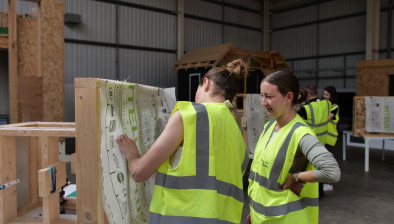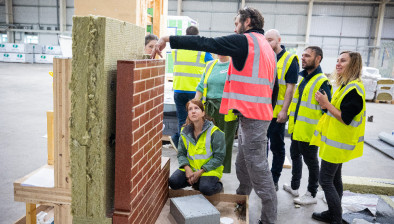CSIC to showcase built environment’s climate role in COP26 events
Construction Scotland Innovation Centre (CSIC) is set to put the built environment at the heart of addressing climate change by hosting an international showcase that will run alongside the COP26 summit from 1-12 November.

Through an extensive programme of activity at its Innovation Factory in Hamilton, CSIC will demonstrate the low and zero-carbon alternatives available to the construction sector and the emerging opportunities to build more sustainably.
Over the two-week period, the Innovation Factory will host some of the UK’s most innovative prototypes and exhibits that could pave the way for a more sustainable built environment. CSIC is welcoming visitors to come along and learn more.
With construction and the built environment accounting for as much 47% of UK carbon emissions, CSIC has recognised the major role it must play in transitioning to zero carbon, with innovation critical to making meaningful and long-lasting change.
Stephen Good, CEO of CSIC, said: “Climate change is at the top of the global agenda and, with COP26 arriving in Glasgow next month, the eyes of the world will turn to what Scotland is doing to achieve net zero. The construction sector shapes the built environment around us and must decarbonise at pace. COP26 can be the catalyst for change. We need to start looking at sustainable alternatives to today’s solutions, and how emerging innovation can be adopted at scale.
“The idea behind the two-week built environment showcase – BE@COP26 – is to highlight the progress already being made towards a zero-carbon future, with leading demonstrators and exhibits to inspire and educate people on the opportunities and possibilities to do things differently. Cutting-edge materials, processes and next generation skills already exist across the industry, but the real challenge lies in making these the norm.”
Stephen Good
Among the range of exhibits are the UK’s first two-storey modular home manufactured from homegrown cross-laminated timber – part of the wider Transforming Timber initiative; and a NearHome prototype, part of the Scottish Government’s 20-minute neighbourhoods initiative, which shows how disused spaces can be transformed into sustainable, local work hubs.
MultiPly, a carbon-neutral, modular wooden pavilion made entirely of American tulipwood that was the star of the London Design Festival, will also be on display, along with sustainable building materials such as Kenoteq’s K-Briq made from 90% recycled construction waste.
As well as guided tours around the Innovation Factory and demonstrators, visitors from the built environment and beyond are invited to attend two key conferences taking place during the fortnight: From Forest Floor to Built Environment, celebrating the growing importance of using timber in low carbon construction and BE the Solution, which will explore the sustainable materials, processes and skills that can be adopted by the industry now and mainstreamed.
CSIC’s showcase will also focus on the wider skills agenda and the drive to create a future-proof workforce, with demonstrations of its Passivhaus in Practice training rig and Low Carbon Learning programme in action.
Stephen Good added: “CSIC already acts as a catalyst, bringing the built environment ecosystem together to inspire collaboration, and our role during COP26 is no different. We see our role as providing a focal point to inspire action and drive change across the industry, public and private sector clients and entire supply chains, and we’re working with a range of partners to build a showcase that will leave a lasting impact on the future of the built environment.”
To find out more and to book a visit go to: be-at-cop26.org





















